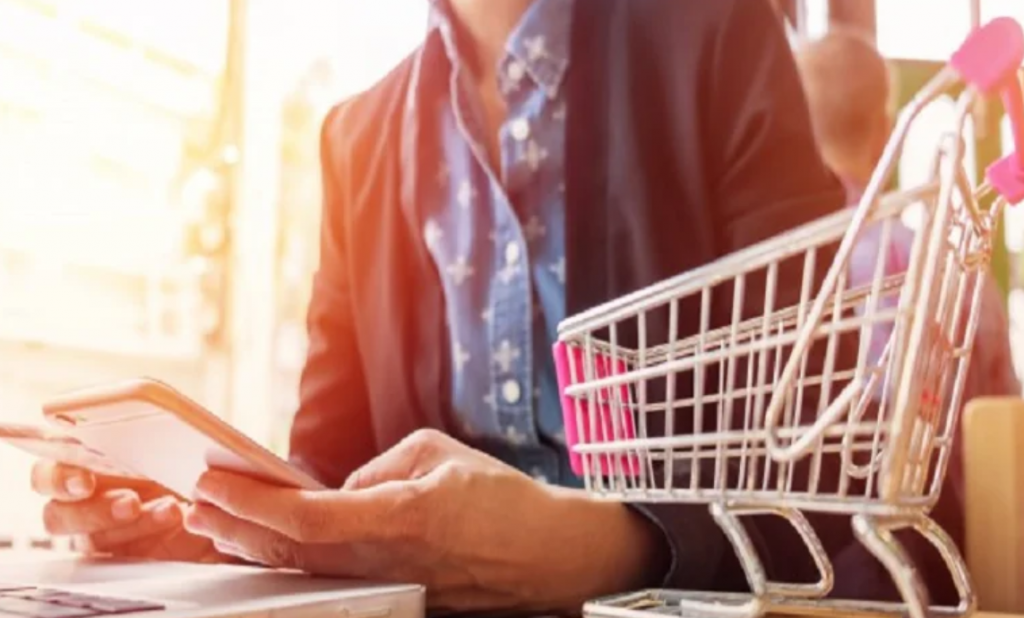Learn more about eservices dropshipping and the Asigo System by Chris Munch and Jay Cruiz at https://asigosystem.com .
If you’ve been considering starting an online store in 2022, this article is for you. In the past 5 years, ecommerce has grown exponentially. In fact, according to Forbes, the eCommerce market should expand by $1 trillion by 2025. And it doesn’t show signs of slowing down anytime soon. It’s safe to say that most people would prefer to shop from their couch rather than going out. That’s why we’re going to take a look at the future of ecommerce and how you can start and scale you own online store in 2022!

Learn more about the new business opportunities and trends in 2022 during a free workshop on January 25 with Steve Clayton and Aidan Booth. Learn more athttps://muncheye.com/aidan-booth-steve-clayton-kibo-eclipse
Whether you want to sell clothing, beauty products, or offer your services online, it’s easier than ever before to make money through ecommerce. However, running an online store isn’t always easy. You need to know which products will be popular in 2022 and how to get more traffic to your online store. So join the Kibo Eclipse workshop to find out more about their findings and their new eCommerce training program Kibo Eclipse.
eCommerce in 2022 and Beyond
Digital marketing will play a huge role in the future of ecommerce. Customers are now easily able to find products or services they’re interested in because of all the social media content out there and the expanding number of marketplaces online.
Customers are able to learn more about the items they’re considering purchasing, read reviews, watch tutorials and even ask questions about any concerns they have. All these benefits can make customers feel confident about their purchase decision.
With so many people now owning smartphones and tablets, mobile commerce looks like it will be a major force in the coming years.
These are just some predictions – but as time goes on we’ll see what actually happens:
- Artificial intelligence: Many retailers are using artificial intelligence to help their customers with purchases. There are many potential benefits from integrating AI into your business strategy. You can use AI to help you sell products, improve customer service and even engage with customers on social media.
- Focus on Sustainability: In the wake of the Covid-19 pandemic, organizations have been under pressure to deliver financial value while addressing social and environmental impacts to benefit all stakeholders.

With the availability of free shipping for most items, consumers might be less inclined to go into stores and browse products.
- Voice assistants: Voice assistants like Amazon Alexa and Google Home will continue to grow in popularity and integration into our daily lives. They’ll be more commonly used by businesses and consumers alike in the future.
- Personalization: The ability to customize products is one of the most common reasons people shop online today. People want their shopping experience to reflect their personal style and preferences. The top marketing tactic for retailers is “targeting and personalization,” the third-highest ranking among any other tactic. That’s why personalized marketing is crucial for your success as an online retailer!
- Blockchain: Blockchain technologies will also continue to grow over the next 5 years due to its potential for transparency, security and automation.
- China and the US are expected to account for 55% of the value growth in global e-commerce opportunities, as they are the two biggest e-commerce market.
Key Players
Amazon has been the most disruptive force in retail with their ongoing dominance of the US e-commerce landscape. They have a strong position in almost every sector, with a combined share of more than 50% of total online commerce.
They have done this by offering a broad range of products and services for both consumers and business-to-business customers, by investing heavily in logistics and delivery networks, by aggressively pricing items to be competitive with other retailers.

But as Amazon continues to grow and make more investments, the company will continue to be a major player in the e-commerce landscape.
Although Amazon is the top dog in e-commerce, its net sales revenue has more than doubled in recent years… however, in terms of gross merchandise value globally, Alibaba’s marketplaces take the crown.
Besides, according to Kibo Eclipse developer, Steve Clayton,
consumer behavior has been altered by Covid. Users used to go to Amazon for fulfillment of their needs, but then products ordered via Amazon were nowhere to be found; they could not be delivered; the prices were high; and a result people turned to other marketplaces like Facebook Marketplace, Google Shopping, Target, Walmart and other smaller online stores.
Learn more about Steve Clayton’s insights on the eCommerce market and his new training program Kibo Eclipse at https://muncheye.com/aidan-booth-steve-clayton-kibo-eclipse
The World Is Moving Towards A Digital-First Economy
One of the biggest trends in ecommerce is how more and more people are spending their money online. And it’s not just for clothes or electronics anymore. People are shopping for groceries, travel, furniture—you name it.
And that means there’s an opportunity for you to start selling things on the internet, too.
So what does this mean? Well, it means that with ecommerce there’s no longer an excuse not to reach out to your customers with your product or service offerings. You can tap into a potential customer base of billions of people by starting an ecommerce store.
Customers Are Becoming More Discerning About What They Buy And When They Buy It
There is a growing number of customers who are purchasing more and waiting longer before making a purchase.

This means that customers want to know what you’re going to offer them for their money. In order to win over customers, your ecommerce store must offer quality products at competitive prices. These high-quality products will make the customer feel confident in their purchase and more likely to come back in the future.
When customers have a good experience with your business, they become repeat customers. Let’s say you have a small brick-and-mortar store that sells clothing. You might see a lot more people coming into your store if you provide an excellent customer service experience and have some competitive pricing for your merchandise!
null
Multi-Channel Shoppers Are Increasing in Number
The first ecommerce trend we’re going to take a look at is the increase in Multi-channel shoppers.
Multichannel eCommerce in 2022 will thrive on SMEs’ ability to compete on fast fulfilment rates. Businesses continue to invest in micro-fulfilment to boost resilience and maintain some control over the shopping experience.
What does this mean for you? If you want to stay ahead of the curve, you’ll need a multichannel eCommerce strategy which requires multichannel distribution and delivery options. Order fulfilment systems should integrate the logistics functions across all channels. You should make sure your online store is optimized for mobile devices.
Retailer Investments in Supply Chain
Retailers are investing more in their supply chains by upgrading to better systems and technologies, both off and online.
Over the last two years, Walmart, for instance, has invested more than $11 billion in this area to better systems and technologies, both off and online. Big-name retailers have been upgrading their supply chain to keep up with customers’ changing needs.
Digitalization Continues…
The world is quickly becoming digitalized. More and more people are looking for online stores to buy their desired products. The number of global shoppers who prefer to shop online is expected to increase by 17% percent in 2022. Consumers now shop exclusively online, even baby boomers who had never done so before. Online sales grew nearly 50% at the peak of the pandemic as consumers remained at home but still shopped.
This is due in part to the convenience that shopping online provides, but it’s also because consumers want more control over where they purchase goods.
How To Build You Own Online Store?
As the retail landscape shifts and changes, many entrepreneurs are turning to ecommerce as a way to stay ahead of the curve. However, one of the most basic questions is how to start an online store. For those who may be unfamiliar with this process, it can seem like a daunting task. But never fear!
From developing your brand identity, understanding e-commerce platforms, getting started on social media, or promoting your new website – the new training program Kibo Eclipse by Steve Clayton and Aidan Booth will help you navigate the process of launching your own online store!
And if you have decided to invest in the Kibo Eclipse program or if you are on the fence, check out the thorough review of the program by Chris Munch and his bonus package.
Learn more at https://muncheye.com/aidan-booth-steve-clayton-kibo-eclipse






























